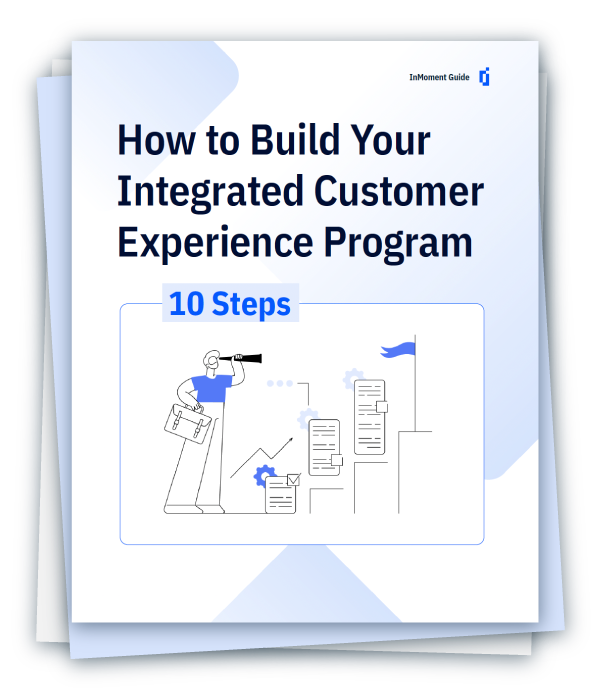9 Must-Read Articles on EX, Linking EX & CX, and Branded Experience

Organizations around the world are actively evaluating—and seeking to better understand—the decision-making and behavioral influence of employee and customer trust, the drivers of emotional bonding with a brand or company, and what is required to create and sustain a more valuable branded experience.
If these topics are on your company’s radar, you can get the answers you need here! In today’s post Pearl-Plaza EX and EX-CX linkage expert Michael Lowenstein is sharing his thought-leading insights on just those subjects. Check out these must-read articles!
Top Articles on EX, Linking EX & CX, and Branded Experience
#1: The Future Role of Consumer Trust
Stakeholder (customer and employee) trust is about performance consistency and reliability, active 360 degree communication, and emotional security on an individual level, and humanized processes which lead to desired outcomes. It’s based on perception of personal value delivery relative to expectations. Like a bank or investment account, employee and customer trust is earned; and it can build, or decline, over time as the totality of experience unfolds.
#2: Trust as an Emotion
Trust is considered to be a “feeder” emotion, actively contributing to an overall perception of experience value, which, to help assure success, must become part of how organizations design experiences for both customers and employees. It is evident in both b2b and b2c products and services, everywhere around the globe. In some industries, such as financial services, trust has particular importance, especially concerning brand image and optimized relationships..
#3: The Customer Behavior Consequences of Low and High Employee Trust
A high percentage of U.S. employees simply don’t trust their employer. This has a direct impact on employees’ perceptions and behavior, on their level of commitment to the company and also its customers. There are progressive organizations, such as Zappos, that focus on mutual trust between employer and employee. At very high levels, trust can help produce a corps of employee advocates (aka ambassadors in the post), making them active, contributing partners in a shared destiny with their employer.
#4: What if Employees Don’t Support Brand and CX Initiatives?
As organizations design brand and customer experience initiatives and programs, there is often tacit belief that employees will indirectly and directly support such efforts. It has frequently been demonstrated, however, that neutral or uncommitted employees can withhold their support and/or participation, even being negative in this regard. Without multi-level employee commitment (to the organization, its product/service value proposition, and its customers) these programs can be in jeopardy of not meeting business outcome goals
#5: The Positive and Negative Emotions of Employees and Customers
Going beyond traditional quality-related and tangible aspects of value to behavioral drivers, there are 20 stakeholder experience-related emotions, which can be applied to deeper understanding of decision dynamics. Eight of the emotions are negative (stressed, frustrated, unhappy, etc.) and twelve are positive (safe, trusting, energetic, etc.). At the pinnacle of positive emotions are ‘happy’ and ‘pleased’, and this can be expressed in experience through the concept of lagniappe, essentially purposeful overdelivery of value.
#6: Emotional Drivers Shared by Employees and Customers
Getting at the “feelings”, drivers of underlying customer and employee emotions, has seen growing importance. Though this has been slower to develop on the employee side, changes in consumer and marketing dynamics have resulted in significantly increased focus on how emotions shape, and are shaped by, experience. For both groups of stakeholders, the key priorities are to create, support, and leverage trust and value, through several techniques: transparent and frequent communication, understanding of behavioral influences, etc.
#7: The Importance of Brand Image in Shaping Perceived Value and CX
Corporate and brand image is a key, though less studied, element of perceived stakeholder value and overall experience. Research has demonstrated, for example, the strong correlation of brand and product reputation through online reviews and resultant sales. On the employee side, this impacts recruitment and retention. For both customers and employees, there is also evidence of downside performance due to impaired or poor reputation. Proactive organizations, understanding this, have taken an array of steps to protect image and reputation.
#8: Creating Emotional Value for Customers and Employees
Many companies have tactically elected to apply traditional engagement approaches in the belief that these will enhance employee and customer behavior. However, more progressive and advanced organizations have learned that stronger value and business outcomes, for both stakeholder groups, are realized by creating emotionally-based commitment and advocacy behavior. The proof is that the most successful organizations reach higher levels of perceived value, performance, and financial results through such contemporary means.
#9: Customer Bonding and the Branded Experience
There are organizations, such as IKEA, for example, where the experiences created for customers are meant to be personally bonding and immersive – through product design, employee interaction, and the overall store visit. It is, in effect, a ‘branded customer experience’, distinctive and unique to this retailer. Examples are offered of B2B and B2C companies that have transcended from transactional, commoditized experiences and now offer branded differentiation with higher perceived value—for both employees and customers.



